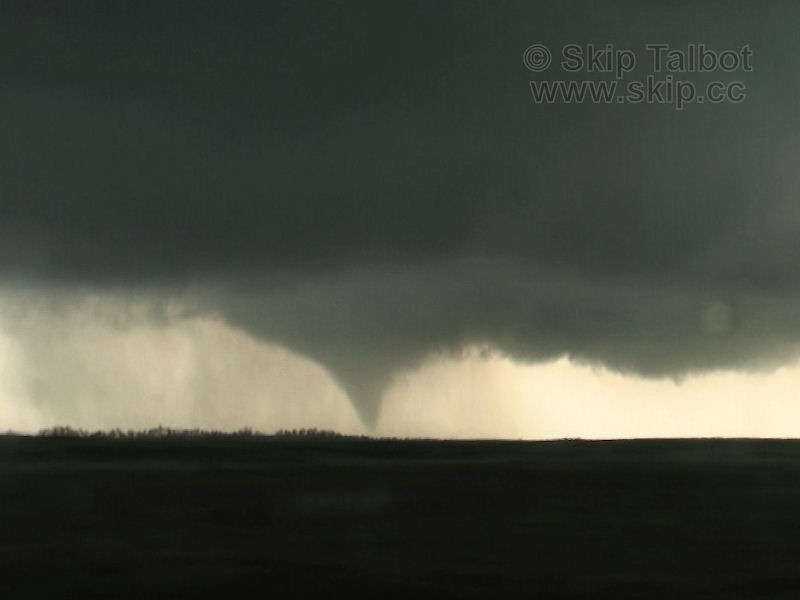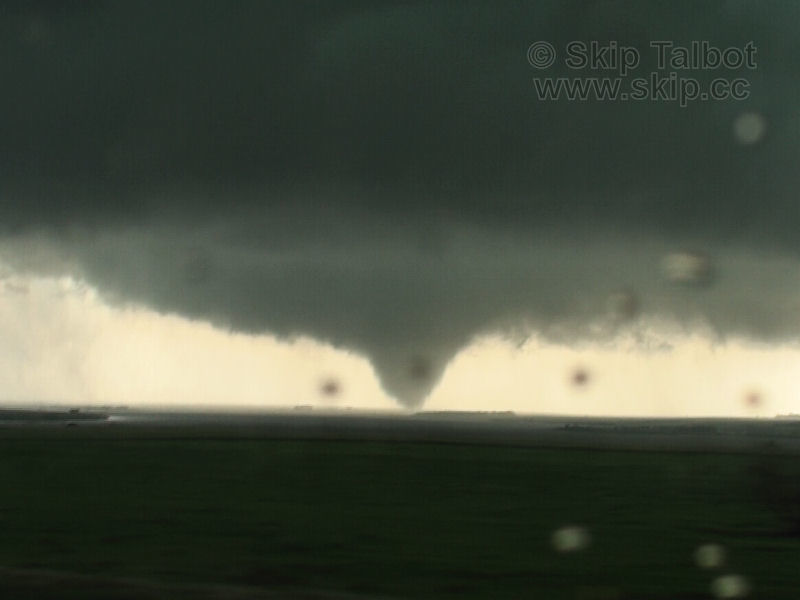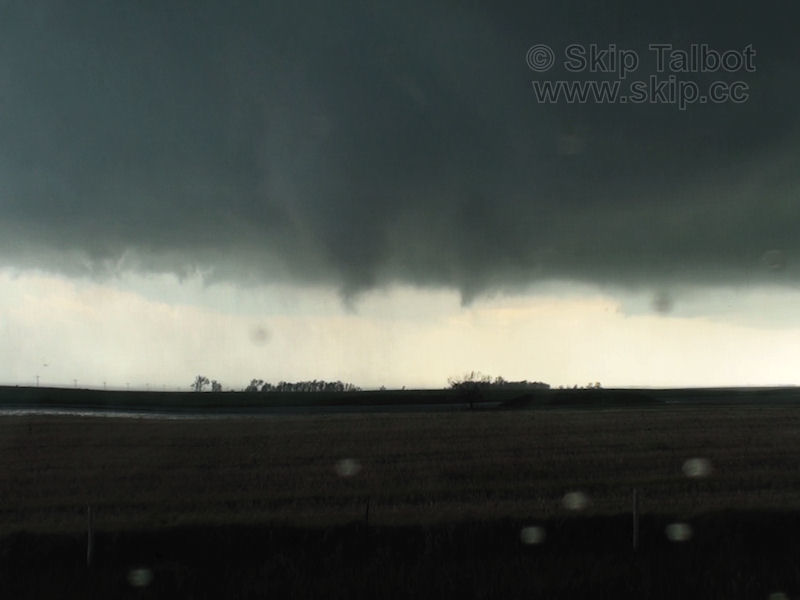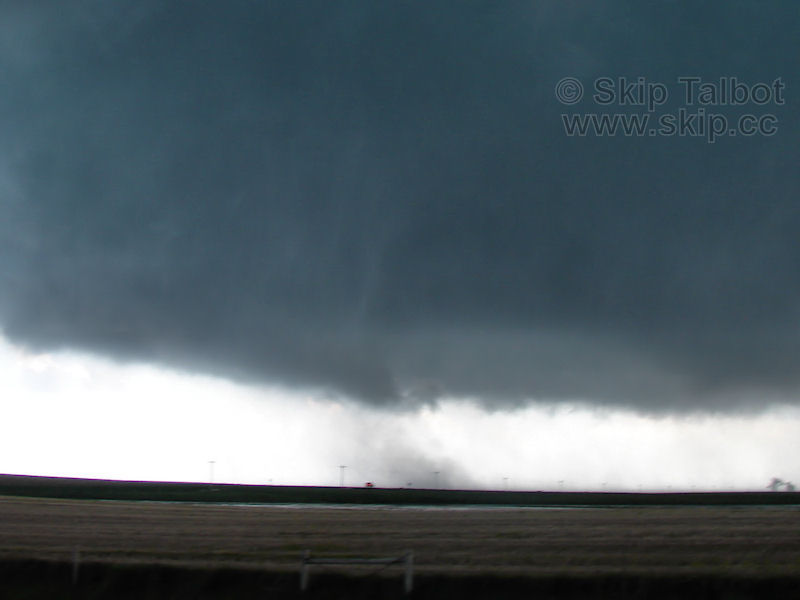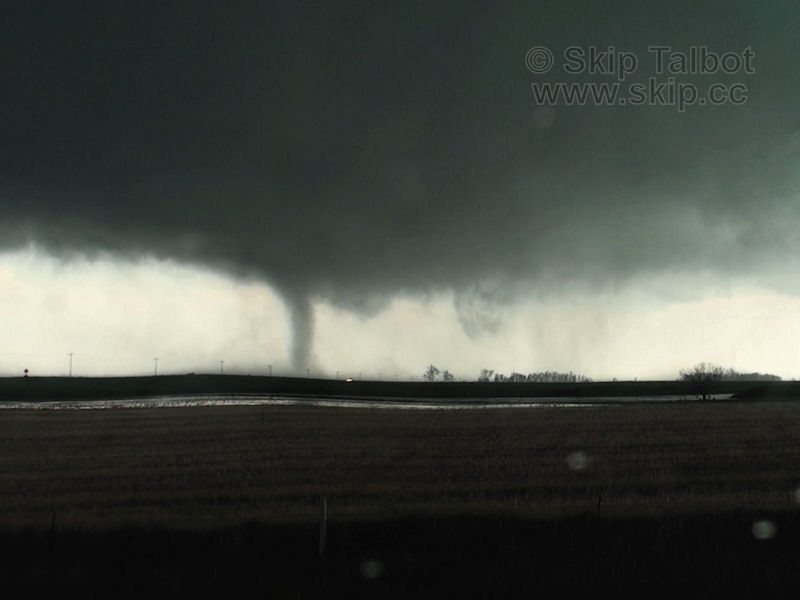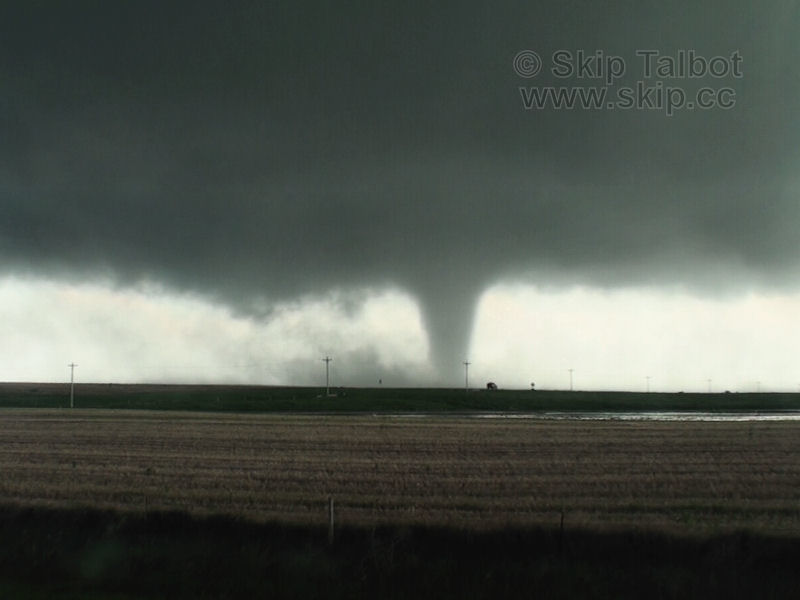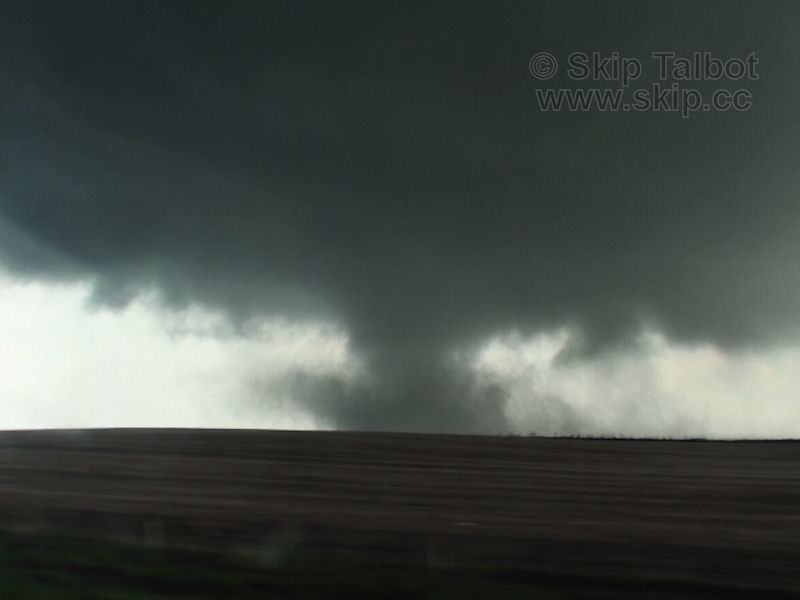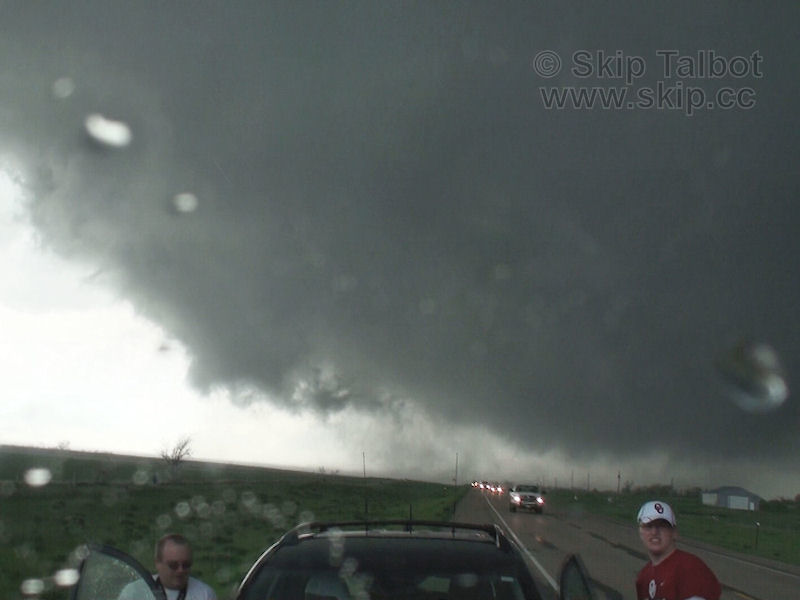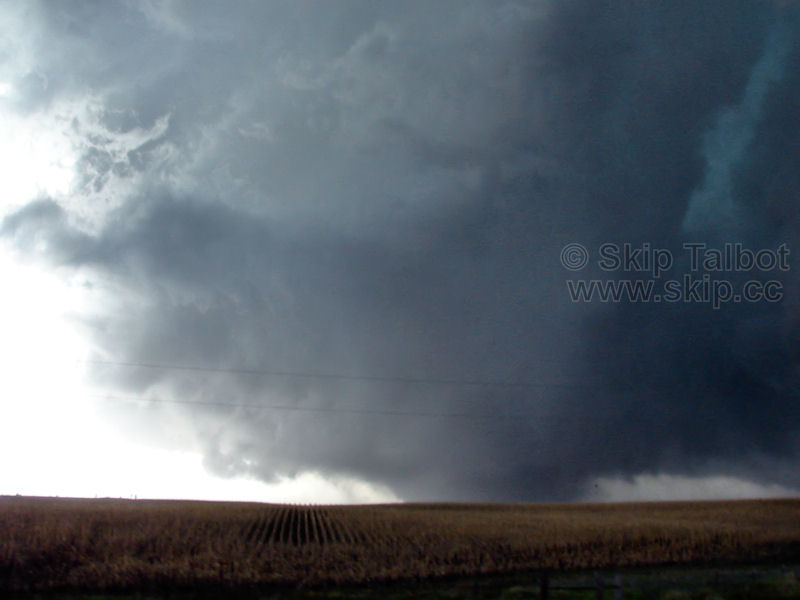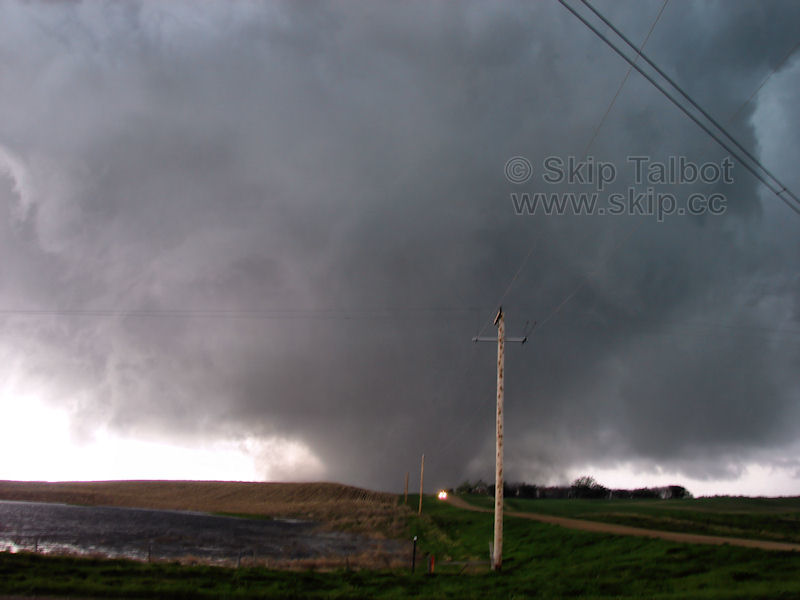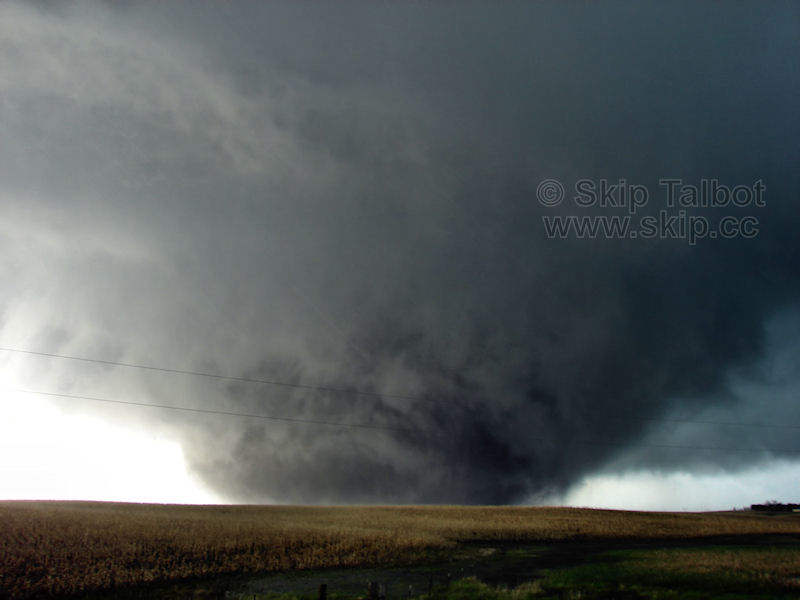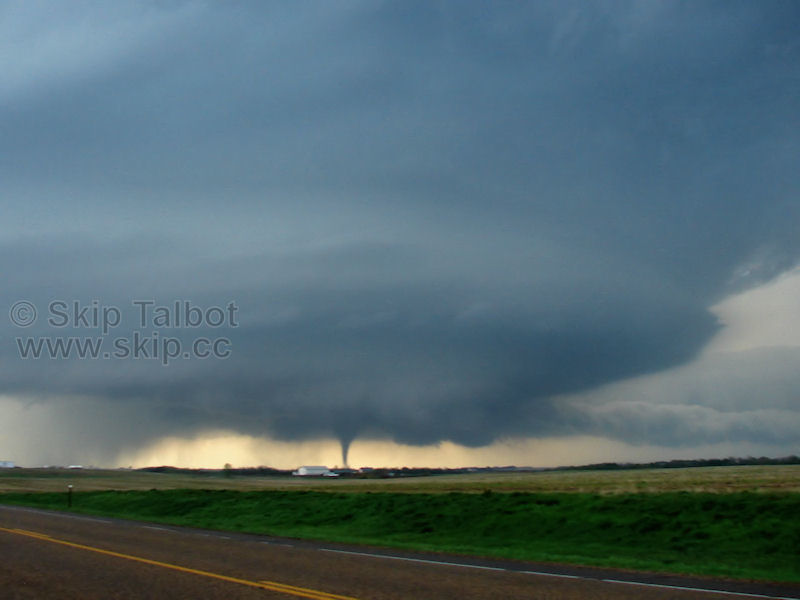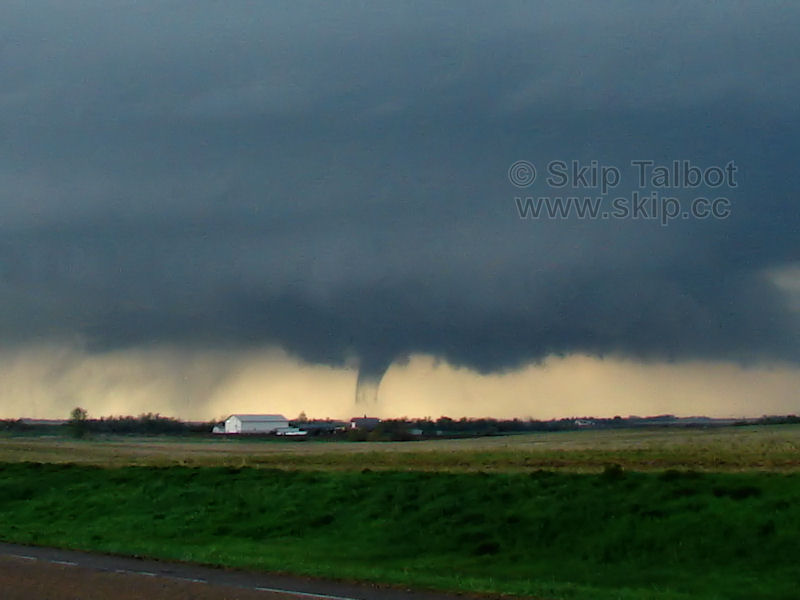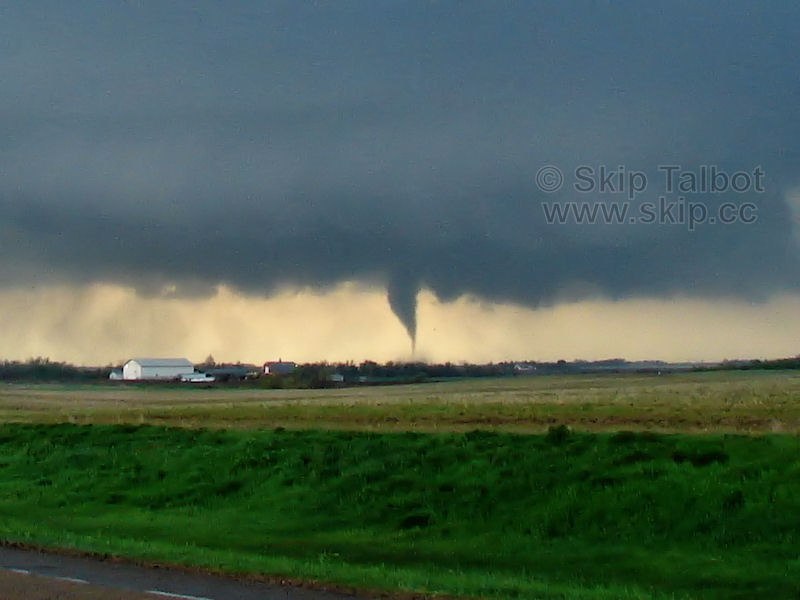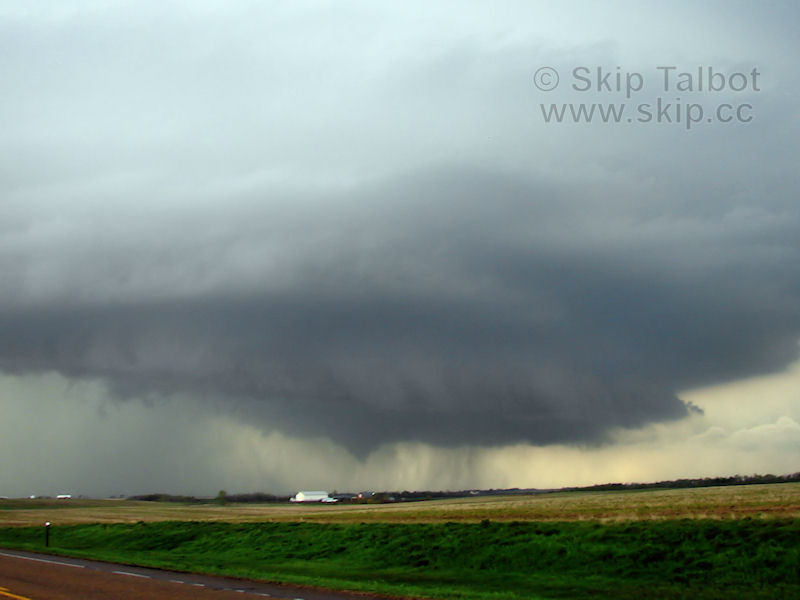I went through my video and pictures trying to get an accurate tornado count for the day. While on the chase I was thinking there were two main tornadoes that I witnessed, believing that the first several tornadoes were sub vortices of the developing wedge. I revised the count to four after seeing that, although these tornadoes were part of a larger circulation, the larger circulation had not yet become tornadic (visible debris). After pouring through my pictures and video, I may have actually witnessed six separate tornadoes. We left the storm early as the storm was permanently transitioning into an HP mode, making it tricky to chase, and we wanted to go back and get Kevin Crawmer's car which he ditched south of Bowdle. There were several more tornadoes after this including that rope with the drillbit end, which we missed as a result.
Tornado #1:
Touched down at 6:15 and lasted approximately 4-5 minutes
The initial tornado fully condensed quickly and maintained mostly a cone shape. The funnel orbited around the meso/wall cloud/tornado cyclone, winding up on the north side of it before it dissipated. As a side note, our intercept of these initial tornadoes was quite unorthodox. We drove north underneath the RFD and could see right up in the vaulted region it created in the storm, and then we drove east, right underneath the new wall cloud. I distinctly remember coming up from behind the wall cloud which had a very prominent tail cloud and well developed base, while our tornado formed out of what looked like the occluding horseshoe base of the old wall cloud.
Tornado #2:
Approximately 6:19
When I was going through my pictures I thought that this was just a funnel and that the debris cloud in the second shot was remnants of the first tornado. Its even stated this way in my log, which I need to revise. There are two funnels in the first shot. They are more than likely sub vortices of a larger circulation, however, I don't believe that the larger circulation had intensified to the point that it was tornadic during this time. So while these tornadoes orbit a larger circulation, they are independent. In the first shot, tornado #1 is on the north/closer end of the photo and the second funnel is developing tornado #2. Tornado #2 does not fully condense, but does have a visible debris cloud as seen in the second shot. This tornado also orbited around the meso winding up on the north side.
Tornado #3:
6:20 to approximately 6:22
This tornado condensed so rapidly, that it looked exactly like a sub vort on a developing wedge, which is what I immediately though of when I saw it. The transition between this tornado and the wedge is fuzzier as the debris cloud on this tornado fanned out and eventually the wedge condensed over that. I'd still argue though at this point that this tornado went through a full cycle before the wedge had really formed, or that the wedge was starting to develop while this tornado was still dissipating.
Tornado #4:
6:22 (broad dust whirl) to 6:39 (still in progress but lost sight due to repositioning and heavy RFD rain wrapping)
The wedge formed from a large, yet diffuse dusty debris cloud beneath a wildly rotating meso. If you watch my video there is full condensation on the back end of the dust plume that lasts mere seconds. I'd definitely say this was a sub vortex of the wedge at this point as the dust on the ground encompassing it was clearly tornadic. the wedge fully condenses as we're driving north on the west side of Bowdle and is well in progress as we cut through town. We make our turn north out of Bowdle noting the fully condensed tornado, letting it approach our position before we ducked south to avoid the RFD core and ditch Kevin's smoking car.
Tornado #5:
6:50 to 6:54
Clearly a separate tornado from the first batch. Tornado #5 formed after the storm transitioned from HP to classic modes. This transition is relatively rare, and the fact that we saw this several times that day is just epic and a tribute to the power of this storm. The tornado retreated before fully condensing again with more of a visible debris cloud. I don't doubt there was one ground circulation and a single funnel associated with both of these periods of condensation, however.
Tornado #6:
Approximately 7:00
This one is not as clear cut. Its most likely a funnel from our vantage point. Other chaser footage from closer vantage points confirms there is a debris cloud underneath this feature, however. Its possible this is a continuation of tornado #5, however, I have several minutes in between my video between the two and I believe tornado #5 had fully retreated before this feature appeared. I did lose my fix on the storm for a couple minutes when I bumped my pan/tilt controls, so I don't really have the transition on video. Our position makes confirming this feature as tornadic difficult, but the other chaser footage sells it for me.
No doubt there were a lot more tornadoes than I actually got shots of. Radar animation with GPS overlay coming next...

